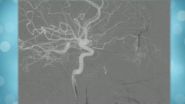(Press-News.org) The results of their research have been published as the cover story of the renowned medical journal Cancer Cell.
Fatty liver disease – alongside fatty liver due to massive alcohol consumption – is mainly caused by excessive consumption of fat and sugar combined with a lack of exercise or a sedentary life style. This is referred to as non-alcoholic fatty liver disease (NAFLD). If NAFLD becomes chronic – e.g. through the constant uptake of high lipids and high sugar combined with lack of excercise a chronic inflammatory response is triggered in the liver tissue in addition. This can lead to non-alcoholic steatohepatitis (NASH) – a liver disease with clear detectable pathologic alteratons of the tissue. These liver diseases (NAFLD and NASH), along with chronic viral infections, are the most common causes of liver cancer, or hepatocellular carcinoma (HCC). In the United States, about 90 million people suffer from NAFLD. In Europe, the figure is more than 40 million, and even in threshold countries like India and China, the number of people affected is rising due to increasingly unhealthy lifestyles. More worrying, in all of the above mentioned states the numbers of NAFLD and NASH patients is constantly increasing. Consequently, the incidence of HCC resulting from NASH and NAFLD is also rising worldwide. In the United States, HCC is the fastest-growing form of cancer at the moment. No efficient causal therapy exists for HCC patients of which appr. 800.000 die every year.
T cells involved in the development of fatty liver disease, NASH and HCC
The mechanisms that cause diseases such as fatty liver disease, steatohepatitis and HCC are still not widely understood. However, immune cells, particularly CD8+ T cells and NK T cells seem to play an important role. This finding was made by a team of scientists led by Prof. Mathias Heikenwälder, Prof. Matthias Tschöp, Dr. Kerstin Stemmer, Dr. Kristian Unger, Prof. Ulrike Protzer and the working group of Dr. Hans Zischka from the Helmholtz Zentrum München together with a team headed by Prof. Percy Knolle of the Technische Universität München (TUM), Prof. Achim Weber from Zurich University Hospital and Dr. Monika Wolf, Institute of Surgical Pathology, University Hospital Zurich. The animal model which was used to examine the long-term effects of metabolic syndrome* enabled the scientists to elucidate new mechanisms that cause fatty liver disease and also show how it can develop into liver cancer.
Inflammatory events offer starting point for prevention and treatment
The scientists assume that an existing metabolic imbalance results in the activation and migration of immune cells to the liver. There, the immune cells interact with liver cells and trigger an inflammatory response that damages the liver tissue and also destabilizes the metabolic activity of the liver cells. "Initially it immune cells promote fatty liver degeneration. The inflammation, which is triggered by specific immune cells, encourages the progression of fatty liver pathology and causes NASH to develop. These processes are the basis for liver cell degeneration, which can cause HCC," explains Prof. Heikenwälder, who led the study. "Our results provide completely new insights into the development of these serious liver diseases. Building on this knowledge, we now want to develop new, preventive and therapeutic strategies to combat these diseases." The initial studies are already under way in the preclinical model.
INFORMATION:
*Metabolic syndrome: a combination of obesity / abdominal adiposity, insulin resistance, raise levels of lipids in the blood and raised blood pressure.
Further information
Specialst publication:
Wolf, M. et al. (2014), Metabolic activation of intrahepatic CD8+ and NKT-cells causes nonalcoholic steatohepatitis and hepatocellular carcinoma via cross-talk with hepatocytes. Cancer Cell, doi: 10.1016/j.ccell.2014.09.003
The Helmholtz Zentrum München, as the German Research Center for Environmental Health, pursues the objective of developing personalized medicine for the diagnosis, therapy and prevention of wide-spread diseases such as diabetes mellitus and lung diseases. To this end, it investigates the interactions of genetics, environmental factors and lifestyle. The Zentrum's headquarters is located in Neuherberg in the north of Munich. The Helmholtz Zentrum München employs around 2,200 people and is a member of the Helmholtz Association, which has 18 scientific-technical and biological-medical research centres with around 34,000 employees. http://www.helmholtz-muenchen.de
The Institute of Virology (VIRO) investigates viruses that chronically infect humans and can cause life-threatening diseases. The research activities of the institute focus mainly on the HI virus which causes AIDS, on endogenous retroviruses, which are integrated into our germline, and hepatitis B and C viruses, which cause liver cirrhosis and hepatocellular carcinoma. Molecular studies identify new diagnostic and therapeutic concepts to prevent and treat these viral diseases or to prevent the formation of virus-induced tumors.
The Research Unit Radiation Cytogenetics (ZYTO) investigates radiation-induced chromosome and DNA damage in cell systems and human tumours. The focus is on clarifying the mechanisms associated with radiation-induced carcinogenesis and radiation sensitivity of tumour cells. The aim of this research is to find biomarkers associated with radiation-induced tumours in order to develop personalized radiation therapy for the stratification of patients. ZYTO is a part of the Department of Radiation Sciences (DRS).
The Institute of Diabetes and Obesity (IDO) studies the diseases of the metabolic syndrome by means of systems biological and translational approaches on the basis of cellular systems, genetically modified mouse models and clinical intervention studies. It seeks to discover new signaling pathways in order to develop innovative therapeutic approaches for the personalized prevention and treatment of obesity, diabetes and their concomitant diseases. IDO is part of the Helmholtz Diabetes Center (HDC).
Immune cells in the liver drive fatty liver disease and liver cancer
2014-10-14
ELSE PRESS RELEASES FROM THIS DATE:
Parkinson: How toxic proteins stress nerve cells
2014-10-14
This news release is available in German. FRANKFURT Parkinson's Disease is the second most common neurodegenerative disorder. In Germany alone, almost half a million people are affected. The focus of the disease is the progressive degeneration of dopamine-producing nerve cells in a certain region of the midbrain, the substantia nigra. Misfolded proteins are the cause. Until recently, it was unclear why damage is confined to specific nerve cells. A team or researchers led by Frankfurt neurophysiologists has now defined how this selective disease process begins using ...
Researchers identify potential drug that could help treat cystic fibrosis
2014-10-14
From an early age, the lungs of individuals with cystic fibrosis (CF) are colonised and infected by bacteria, a common example being S. aureus. These bacterial infections cause the lungs to become inflamed, infected, and can eventually lead to permanent lung damage. Researchers from the University of Pennsylvania and the Howard Hughes Medical Institute previously showed that an enzyme called Sphingomyelin phosphodiesterase C (SMaseC) produced by the S. aureus bacterium may harm the health of CF patients. Now, they have discovered an inhibitor for this pathogenic bacterial ...
More physical activity improved school performance
2014-10-14
Just two hours of extra physical activity each week can improve school performance. This has been shown by a study of approximately 2,000 twelve-year-olds carried out by scientists at the Sahlgrenska Academy, University of Gothenburg.
The scientists Lina Bunketorp Käll, Michael Nilsson and Thomas Linden, at the Centre for Brain Repair and Rehabilitation at the Sahlgrenska Academy, University of Gothenburg, have tested the hypothesis that increased physical activity stimulates learning and improves school performance.
In the study, published in the scientific periodical ...
The neuroscience of holding it
2014-10-14
Wherever you are right now: squeeze your glutes. Feel that? You just also contracted your pelvic floor too, whether you wanted to or not.
Scientists studying the source of chronic abdominal and pelvic floor pain found an unexpected connection in the brain between the pelvic floor – the muscle responsible for, among other things, keeping you from peeing your pants – and various muscles throughout the body. They've found some evidence for a link as far away as the toes (try tapping a toe and see if you feel the clench), but the strongest link so far is with ...
Rediscovering Venus to find faraway earths
2014-10-14
WASHINGTON, Oct. 14, 2014—Astronomers Chih-Hao Li and David Phillips of the Harvard-Smithsonian Center for Astrophysics want to rediscover Venus—that familiar, nearby planet stargazers can see with the naked eye much of the year.
Granted, humans first discovered Venus in ancient times. But Li and Phillips have something distinctly modern in mind. They plan to find the second planet again using a powerful new optical device installed on the Italian National Telescope that will measure Venus' precise gravitational pull on the sun. If they succeed, their first-of-its-kind ...
US college students eat their vegetables. Really?!
2014-10-14
U.S. college students do better than their counterparts in the United Kingdom when it comes to physical activity, a healthy diet and less smoking, according to new research published in the latest issue of the journal Education and Health.
"Among U.S. students, we see greater consumption of fruits and vegetables, more participation in organized sports, and less smoking," said American University Prof. Stacey Snelling, a lead study author. "Participation in organized sports and exercise could reflect the more formal focus on physical activity at the college level that ...
Teachable moments about climate change
2014-10-14
First-hand experience of extreme weather often makes people change their minds about the realities of climate change. That's because people are simply more aware of an extreme weather event the closer they are to its core, and the more intense the incidence is. So says Peter Howe of Utah State University in the US, who led a study in Springer's journal Climatic Change Letters about people's ability to accurately recall living through extreme weather events. It also focused on how people's proximity to such events – the so-called "shadow of experience" – aids ...
New 'tree of life' traces evolution of a mysterious cotinga birds
2014-10-14
Ithaca, N.Y.—They are some of the brightest, loudest, oddest-looking, least-understood birds on the planet. Some have bulbous crests, long fleshy wattles, or Elvis-worthy pompadours in addition to electric blue, deep purple, or screaming orange feathers. But thanks to a comprehensive new evolutionary "tree of life" generated for the tropical cotinga family of South America, the door is now open to new discoveries about the more than 60 species in this amazingly diverse group of birds.
"Our study provides comprehensive insight into how nearly all the cotinga species ...
Current models for predicting outcomes after mild traumatic brain injury perform poorly
2014-10-14
New Rochelle, NY, October 14, 2014—For the 5-15% of patients with mild traumatic brain injury (mTBI) who will have lingering physical, behavioral, or cognitive problems 3 to 6 months after their injury, identification of this at-risk population is essential for early intervention. Existing models used to predict poor outcomes after mTBI are unsatisfactory, according to a new study, and new, more relevant predictive factors are different than those used in cases of moderate or severe TBI, as described in the study published in Journal of Neurotrauma, a peer-reviewed ...
New treatment designed to save more eyes from cancer
2014-10-14
VIDEO:
Some children with advanced retinoblastoma are not good candidates for conventional intraocular ophthalmic infusion therapy -- too often making removal of the eye the only viable treatment for saving their...
Click here for more information.
CINCINNATI – Doctors at Cincinnati Children's Hospital Medical Center have developed a new technique for treating the eye cancer retinoblastoma to improve the odds for preventing eye loss, blindness or death in children with ...




